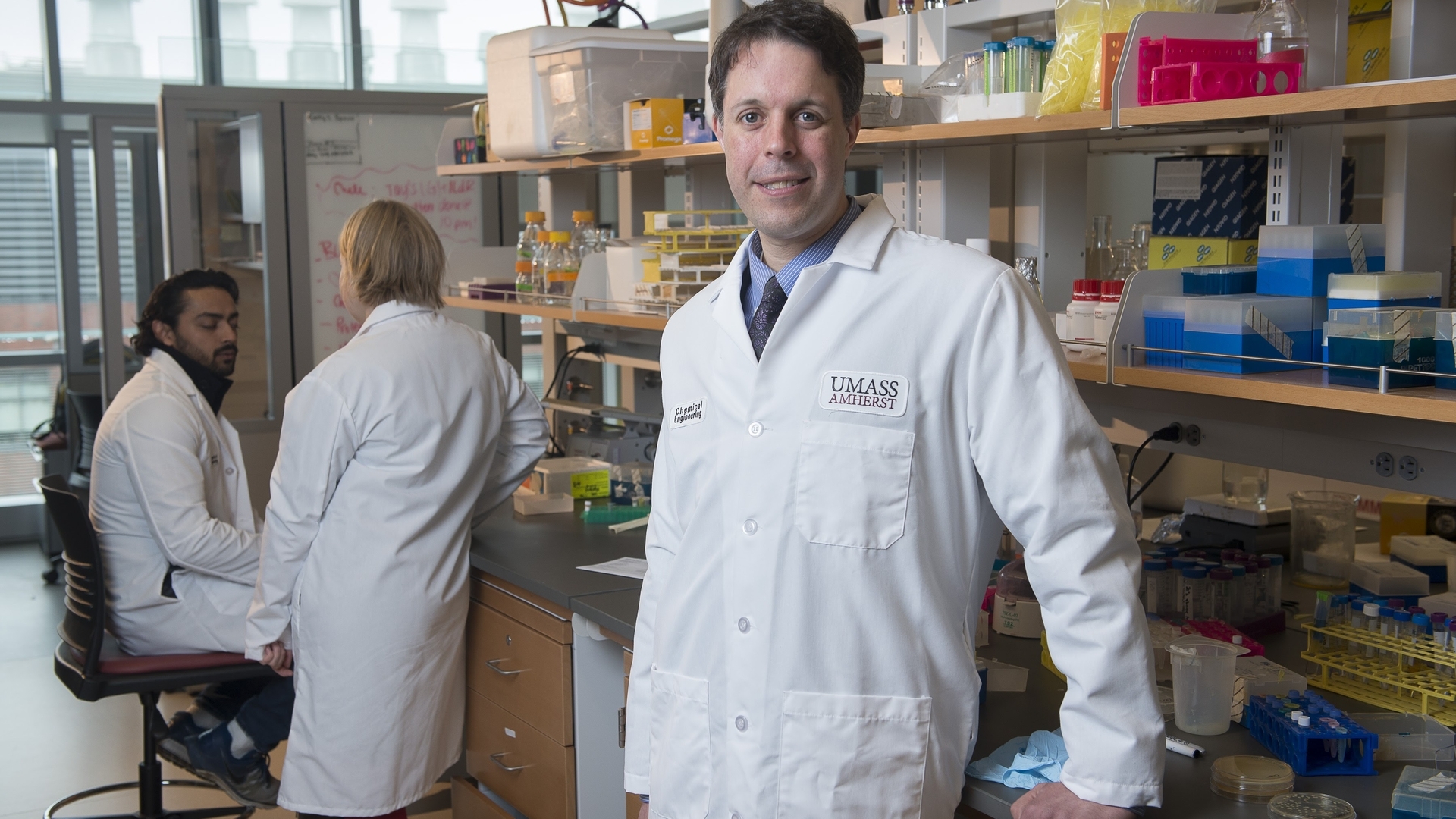We reach more than 65,000 registered users in Dec!! Register Now

Research Using Non-Toxic Bacteria to Fight High-Mortality Cancers Prepares for Clinical Trials
- February 08, 2025
- 3 Views
- 0 Likes
- 0 Comment
UMass Amherst-Ernest Pharmaceutical team’s latest breakthrough uses aspirin in its targeted drug delivery therapy
A University of Massachusetts Amherst-Ernest Pharmaceuticals team of scientists has made “exciting,” patient-friendly advances in developing a non-toxic bacterial therapy, BacID, to deliver cancer-fighting drugs directly into tumors. This emerging technology holds promise for very safe and more effective treatment of cancers with high mortality rates, including liver, ovarian and metastatic breast cancer.
“What we’re trying to do is unlock the potential to treat late-stage cancers,” adds lead author Vishnu Raman, who earned his Ph.D. in the Forbes Lab at the UMass Amherst Institute for Applied Life Sciences (IALS). “Bacteria naturally home to tumors, and this treatment is so targeted, it can treat some cancers without the harsh side effects you’d see with other systematically delivered therapies, like chemotherapy.”
The new findings are the culmination of more than a decade of research by Raman, chief scientific officer of Ernest Pharmaceuticals, an IALS startup co-founded by Raman, Forbes and co-author Nele Van Dessel, a bioengineer who developed the bacterial delivery system as a post-doctoral researcher in the Forbes Lab.
“We were focusing on how to make this strain really safe and user friendly,” Raman says. “The genetic engineering steps we took made this strain at least 100 times safer than anything that’s been tried in the past.”
In this third-generation delivery strain, Raman figured out a way to control when the bacteria, after it has been intravenously injected, invades the cancer cells and delivers the therapy. This greatly improved the ability to target the tumors with higher concentrations of the drug therapy, while also making the treatment much safer.
“In the first-generation strain, we were basically relying on the bacteria’s own brain to go find the tumor and deliver the therapy. But we couldn’t control exactly when that was happening so there were risks associated with invading healthy cells, as well as pre-mature clearance of the bacteria before they colonize tumors, and we wanted to mitigate both risks,” Raman says.
“One core part of this technology is the controlled activation of flagella,” Raman explains. “And the other core part is once the bacteria go inside cancer cells, we engineered them with a suicide circuit. So they rupture on their own and deliver the therapy inside the cancer cell.”
In pre-clinical research with mouse models, the bacteria is injected intravenously. “It goes everywhere, but then the immune system rapidly clears the attenuated bacteria from healthy organ tissue within two days. The bacteria continue to grow exponentially only within tumors during that time. On the third day, we give an over-the-counter dose of aspirin to trigger the bacteria to invade the cancer cells and then deliver the therapy,” Raman says.
“We wanted to make it as simple as possible,” he adds. “So the patient could get the infusion and three days later, at home, they just take an oral dose of aspirin.”
The team is now focused on setting up the process to receive regulatory approval to begin clinical trials.
“We have seen a lot of growth in the area of microbial-based cancer treatment,” Raman says, “and we are proud to be at the forefront of this field.”
List of Referenes
- Vishnu Raman, Christopher L. Hall, Victoria E. Wetherby, Samantha A. Witney, Nele Van Dessel, Neil S. Forbes. Controlling intracellular protein delivery, tumor colonization and tissue distribution using the master regulator flhDC in a clinically relevant ΔsseJ Salmonella strain. Molecular Therapy, 2024; DOI: 10.1016/j.ymthe.2024.12.038
Cite This Article as
No tags found for this post









